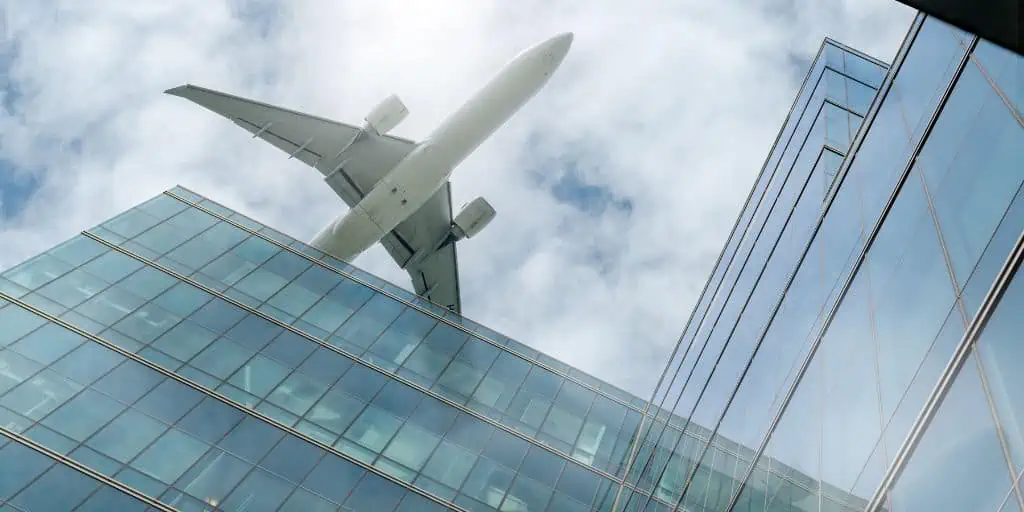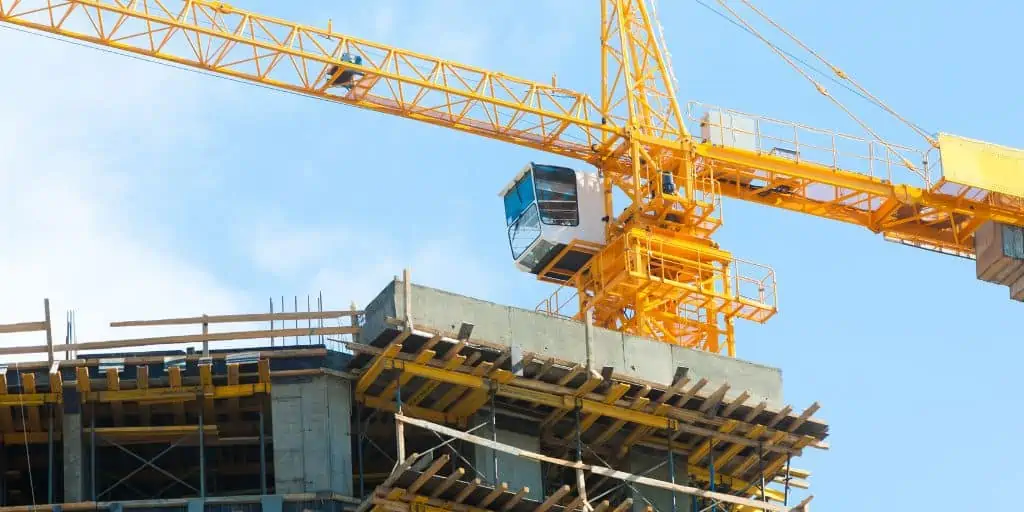What Are Air Rights?
REtipster does not provide legal advice. The information in this article can be impacted by many unique variables. Always consult with a qualified legal professional before taking action.
Shortcuts
- Air rights are the legal rights of property owners to use the airspace above their property, extending out vertically.
- Owners can use, develop, and transfer these rights.
- Air rights can be transferred or leased to other parties, making them a significant part of real estate development.
- Valuing and taxing air rights depend on the jurisdiction, and depend on whether it’s used and the building’s floor-to-area ratio.
- These rights are not unique to the U.S., as examples of their usage can be found worldwide.
How Do Air Rights Work?
Air rights grant property owners the legal right over the space above their property. Essentially, they grant owners the authority to develop and utilize the airspace above their property for various purposes, like putting up infrastructure or selling or leasing the rights to others.
These rights play a role in urban planning and development, particularly in densely populated areas where available land is limited. These rights enable the creation of multi-level structures, such as high-rise buildings, that maximize land use and accommodate growing populations[1].
Moreover, air rights significantly increase a property’s value and potential uses, making it a valuable asset in real estate. This is doubly so in prime locations where vertical expansion can result in profitable investment opportunities.
Scope of Air Rights
In general, the scope of air rights can vary depending on local regulations and zoning laws. In some cases, they may be limited to a specific height or volume, while in other instances, property owners may have more flexibility in developing their airspace.
U.S. laws place an unequivocal ceiling on private airspace, however. According to 49 U.S. Code § 40103 – Sovereignty and use of airspace[2], the United States Government has exclusive sovereignty over a certain height above ground, designating this as a “public airspace.” In this airspace, the public can enjoy the right of transit, and therefore cannot be encroached on by private ownership.
The height of this public airspace depends on the location. For example, this limit is 500 feet above ground level for urban areas[3] and 360 feet above ground level for rural areas[4]. However, this may depend on prevailing regulations, so check with your county or municipality.
Air Rights and Real Estate Development
Air rights significantly impact real estate development, particularly in urban areas where space is limited. Some developments may need additional rights to maximize the potential of their properties and create buildings that offer increased floor area, additional units, or improved views.
Transferring Air Rights
Owners can sell their unused air rights to others using transferable development rights (TDRs) or zoning lot mergers. These are widely used in cities like New York City[5] where the zoning code restricts the building height and city block density.
Transferable air rights enable property owners who may not fully utilize their airspace to monetize them while allowing real estate developers to increase the density or height of their projects. Meanwhile, buyers and developers can exceed the limitations of the local zoning laws and create taller or more extensive structures by purchasing these rights.
TDRs are generally more flexible and the rights can be transferred to other buildings that aren’t necessarily attached to each other. Meanwhile, zoning lot mergers can only be done if the structures (the buying and the selling parties) are within 10 feet of each other’s boundary lines.
Meanwhile, some air rights cannot be sold, transferred, or separated from the underlying property due to safety, environmental concerns, or historical or cultural significance. For example, the Federal Aviation Administration (FAA) restricts air rights for properties around an airport for safety purposes[6].
Note that transferable air rights can be sold or leased separately from the property itself[7].
Examples of Air Rights Usage
Here are specific examples of air rights usage:
Hudson Yards, New York City
Hudson Yards, NYC is a mixed-use development involving leasing air rights from New York’s Metropolitan Transportation Authority for $1 billion[8]. The project aimed to maximize the area’s limited space while creating a vibrant neighborhood.

Hudson Yards train station
Boston’s Prudential Center
The Prudential Center was originally built in the 1960s, but was later redeveloped to include a shopping mall, offices, and the Prudential Tower. The project utilized air rights over the Massachusetts Turnpike[9], transforming what was once just a highway into a multi-use development that includes some of Boston’s most valuable real estate.

Prudential Center, downtown Boston
Chicago’s Millennium Park
Using air rights purchased above the Illinois Central Railroad tracks[10], the Millennium Park transformed an eyesore in the heart of Chicago. Now, it’s home to a public space featuring art installations, gardens, and performance venues. The space has since become a cultural landmark and tourist attraction, revitalizing the surrounding downtown area.

The Cloud Gate sculpture in Millennium Park, Chicago
The concept of air rights isn’t unique to the United States. Some notable examples outside the U.S. include:
Shinjuku Station, Tokyo
The area around Shinjuku Station in Tokyo, Japan is a multi-layered, vertical use of space that integrates transport with retail, office, and entertainment functions. This smart use real estate development earned Shinjuku Station the honor of being the busiest train station in the world[11], serving 3.5 million passengers daily.

Shinjuku Station, Tokyo, the world’s busiest railway station
The Glen Shopping Centre, Melbourne
The developers of the Glen Shopping Centre in Melbourne, Australia purchased air rights for $60 million in 2017 as part of the area’s redevelopment plan. It’s now a major mixed-use development combining retail, residential, and business[12].

A view of Melbourne’s skyline at dusk
Historical Development of Air Rights
While modern air rights as we know it originated in the United States during the late 19th century, even the Roman Empire recognized the concept[13]. In fact, the ad coelum principle in real estate is an abbreviated form of the Latin maxim “Cuius est solum eius est usque ad coelum (et ad inferos),” which means “whoever owns the soil owns it up to heaven and down to hell[14].”
As cities grew and land became scarce, property owners sought ways to utilize the space above their properties. The legal recognition of air rights emerged to address this need, allowing property owners to develop vertically and capitalize on the value of their land.
One significant case in the development of air rights as legal rights is the landmark decision in the 1916 “Blackburn v. City of Los Angeles” case. The California Supreme Court ruled that property owners have a right to the airspace above their land[15], leading to the recognition and establishment of air rights as a legal concept.
Since then, air rights have been regulated and incorporated into zoning laws and building codes in many cities across the United States. These regulations balance the interests of property owners, developers, and the public, ensuring that airspace development aligns with urban planning goals and public safety.
Frequently Asked Questions: Air Rights
How are air rights valued?
The value of air rights depends on factors like zoning laws, development potential, and the local real estate market. In many cases, the floor-to-area ratio (FAR), defined as the floor area relative to the lot area, is the most important factor in air rights valuation.
In densely populated areas, air rights can sometimes be more valuable than the land they sit above. For example, air rights in New York City cost about $225 per square foot[16], but these are mere ballpark figures and can vary by location.
How do air rights impact property taxes?
Owning air rights can have tax implications, as some jurisdictions assess property taxes based on the development potential, which includes air rights. In most cases, untapped air rights are not taxable, but only when sold or conveyed to another party where it becomes an income-producing event and, therefore, can be taxed[17].
As always, the nuances of taxation on the matter may depend on the jurisdiction. Consult your tax advisor for more information.
Are air rights subject to limitations and regulations?
Yes, air rights are subject to various legal limitations. These can include Federal Aviation Administration (FAA) rules governing building heights near airports and local zoning laws that specify allowable building uses, heights, and forms.
Environmental impact assessments may also be mandated depending on jurisdiction and project scope. Even with ownership of air rights, development is constrained by these regulations to ensure compatibility with the surrounding urban context and infrastructure.
Sources
- Goldschmidt, L. (1964, May.) Air Rights. American Society of Planning Officials. Retrieved from https://planning-org-uploaded-media.s3.amazonaws.com/legacy_resources/pas/at60/pdf/report186.pdf
- Sumberg, B. (2015, March 26.) It’s up in the air: air rights in modern development. Lexology. Retrieved from https://www.lexology.com/library/detail.aspx?g=a89b4a0a-1cb5-461d-96cc-13c76e7d75be
- Lacey v. United States, 595 F.2d 614. (Fed. Cir. 1979.) CaseLaw. Retrieved from https://casetext.com/case/lacey-v-united-states
- Causby v. United States. (1948), 75 F. Supp. 262. (Fed. Cl. 1948.) CaseLaw. Retrieved from https://casetext.com/case/causby-v-united-states
- Sky’s the Limit: What Are Air Rights and Why Do They Matter? (2021, June 25.) Localize. Retrieved from https://www.localize.city/blog/what-are-air-rights-and-why-do-they-matter/
- FAA Updates Airspace Obstructions Standards. (2015, December 8.) Federal Aviation Administration. Retrieved from https://www.faa.gov/newsroom/faa-updates-airspace-obstructions-standards
- Air Rights. (n.d.) WestLaw. Retrieved from https://content.next.westlaw.com/practical-law/document/Iadd166112cb611e698dc8b09b4f043e0/air-rights
- Hudson Yards air rights monetisation. (2021, September 20.) Global Infrastructure Hub. Retrieved from https://www.gihub.org/innovative-funding-and-financing/case-studies/hudson-yards-air-rights-monetisation/
- Menino, T., Maloney, M. (2000.) A Civic Vision of Turnpike Air Rights in Boston. Boston Planning & Development Agency. Retrieved from https://www.bostonplans.org/getattachment/f7188bb6-c25e-4e8d-86b1-b3244fa49762
- Gamble, A. (2016, September 8.) Millennium Park a Rare Victory for Urban Planning. Smart Growth Online. Retrieved from https://smartgrowth.org/millennium-park-rare-victory-urban-planning/
- Steen, E. (2022, January 28.) 5 most confusing train stations in Tokyo. Time Out. Retrieved from https://www.timeout.com/tokyo/things-to-do/most-confusing-train-stations-in-tokyo
- Construction on Australia’s largest air-rights development commences. (2019, July 12.) Build Australia. Retrieved from https://www.buildaustralia.com.au/projects/construction-on-australias-largest-air-rights-development-commences/
- Morris, E. (1969.) Air Rights are “Fertile Soil.” The Urban Lawyer, 1(3), 247–267. Retrieved from http://www.jstor.org/stable/27892660
- Fellmeth, A., Horwitz, M. (2009.) Cuius est solum eius est usque ad coelum (et ad inferos). Guide to Latin in International Law (1 ed.) Oxford University Press. ISBN-13: 9780195369380
- Blackburn v. County Of Los Angeles. (1974.) Court of Appeal, Second District, Division 5, California. Decided: September 30, 1974. Retrieved from https://caselaw.findlaw.com/court/ca-court-of-appeal/1828698.html
- Tepfenhart, O. (2022, July 13.) How Do Air Rights Work In NYC Real Estate In 2023? The Nest. Retrieved from https://www.nestapple.com/how-do-air-rights-work-in-nyc-real-estate/
- Raisher, S. (1974, January 7.) Zoning and Land Use—Tax Liability of an Air Rights Conveyance, 7 URB. L. ANN. 285. Washington University in St. Louis. Retrieved from https://openscholarship.wustl.edu/law_urbanlaw/vol7/iss1/14






